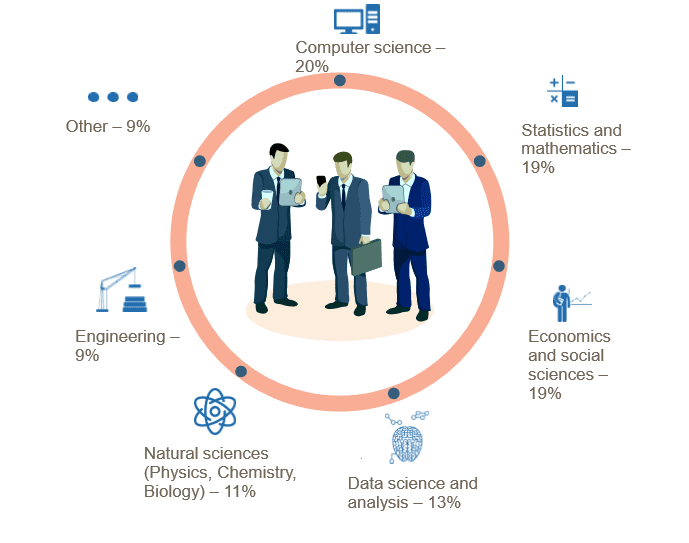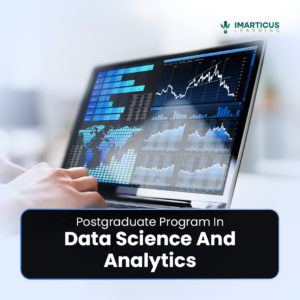It is the question that has already been asked after it was on everybody’s mind for a long time. How can big data help insurance companies – a heavily regulated sector in India and everywhere else in the world – and make them perform better? Especially when it comes to preventing frauds, system gaming, and other illegal activities that are prevalent.
With the competition only rising in the insurance sector, what company makes headway in properly using data analytics and acts a role model remains to be seen. So, in order for us spectators to do that, we will need more information.
How exactly can analytics help insurance companies serve their customers better? There are four major ways.
Use of Data Analytics in the Insurance Sector
Apart from gaining customer insights and helping in risk management, data analytics training can also help understand if it’s worth handing out an insurance policy to a person based on his social stature. How does his social media presence look like? What are his hobbies and adventurous choices? Has he lied in his application? All of this can also be extracted through the proper use of data capturing and analytics tools.
It seems extremely lucrative for the companies but it also poses a risk for us customers who stare at a possible invasion of our personal space and privacy. Having our social media accounts stalked by HR professionals for the purpose of employment is one thing (not a decent task, nonetheless). Having strangers do the same so that they can deny you insurance – which let us remind you is a basic necessity in today’s times – is a big event. It is not to say that this will be the majority outcome but it is what is on the mind of insurers when they consider big data.
Let us look at those four different ways in which analytics can help insurers:
Managing Claims
This is by far the biggest reason why insurers are pushing for use of predictive analytics in the sector. As you can imagine, it can help companies create a database of customer information that can then be used to compare new policy buyers and see if they fall in a bracket of people who might commit fraud such as wrongly filing for a claim.
The insurer can feed the model with past data and then use it to classify its new customers. Since the approval or rejection of a file is more or less under the authority of the insurer, this can help them denying insurance to a possible fraudulent applicant.
Generating Claims Based on Data
This involves checking the profile of a person while she applies for insurance. For example, in the case of house insurance, data can help insurers understand if this specific house is vulnerable to natural incidents; is it closer to the fire station; what is the history of the locality for the past twenty years as far as mishaps are concerned. When we talk about data, there is a lot of scopes.
And when it’s time to act, this collection of data can be extremely helpful to weed out fraudulent applications and other types of scams. It can also help them set better premiums if denying insurance is not an option.
Better Customer Support
Have you ever been in a situation where you have had to get your call to the customer care rerouted a couple of times before you finally got your problem heard? The call first moves to the respective section of the insurance (example: car insurance versus medical insurance), then it goes to the redressal section, and then finally you get someone on the other line to speak. It is extremely annoying for a customer. Even more so when she is in a situation where she needs urgent medical insurance support.
Big data can assist in this process by automatically understanding the issue of a caller and routing it to the respective section. This is possible based on the preliminary details that the customer has to fill in. The analytical model which is attached to the database of policies can better bridge the gap so that the customer gets her information quickly.
On the other hand, this can also help insurers keep a track on a particular customer. How many times in the past five years has she filed for insurance? What does her lifestyle look like now compared to when she bought it? This last piece of information can aid in guiding her should she decide to buy another policy with the same company.
Offering New Services
According to IBM, data analytics can also provide insurers with tools to market new products based on their requirements. Today, retargeting techniques and cold calling are used to push products to customers, but when companies have valuable data in their hand, they can easily club it with their marketing and advertising and even sales departments to better retain customers and make them buy more products.
This will require a lot of integration on the part of insurers, but the current market and the high competition say that companies will be willing to take the jump if they see there’s any scope to grow their customer base and tackle the menace of continued competition.
According to us, newer companies will be more desperate to try these systems out than incumbent ones that have functioned in the same way for years and even decades.
While we have talked about the scope in general tone, it makes sense to understand what specific tools will be of most use. Out of this, content analytics, discovery and exploration capabilities, predictive analytics, Hadoop, and Stream computing are some essential models that will pave the way forward for insurance companies.
Of course, all of this cannot be switched on one fine morning without the approval of IRDAI. The regulatory body is yet to come up with proper guidelines, and insurers will need to abide by those rules before they can start executing them.




 Some ways in which data analysis can be distinguished are as follows:
Some ways in which data analysis can be distinguished are as follows:
